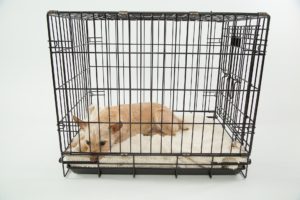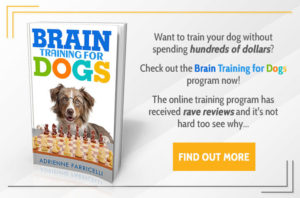Hi, my name’s Tiara Nixon and i’m a certified dog trainer based in California.
I started working with dogs as a teen, helping to train my family’s German Shepherds. I then apprenticed under a locally well known trainer in Washington state before teaching on my own and then obtaining my certification.
I’ve have been a AKC Canine Good Citizen evaluator and an Apprentice Tester for the American Temperament Testing Society.
Currently I reside on a farm with a horse, 3 cats and 2 French Bulldogs. Anyway that’s enough about me!
So, you’ve decided to join the club of dog ownership- hooray for you! Now what?
There is so much information online about how to raise, train, groom, feed, and vaccinate your dog that it can be overwhelming to know where to start when it comes to advice. As a dog trainer and enthusiast for over 20 years I’m here to help!
Below are 10 tips that all first time dog owners should know to avoid getting into sticky (or destructive) situations with your new furry family member.
Tip #1: Crate Training
You met, you fell in love, you moved in together. Most people think crate or kennel training is something you do for puppies but this is a big myth. Just like you, dogs need their own space. I know what you’re thinking, my dog HATES the crate! There are ways to get your dog to enjoy, or at least tolerate, going to their “room”, the biggest being to create a positive association. For this article, I’m not going to talk about HOW, rather, I’m going to try and convince you WHY.
Some people think it’s cruel to leave their dog in a crate. For dogs with spacial or seperation issues, the crate does cause distress. This happens because the dog was not properly trained to the crate (yes, I’m mentioning that again- because it’s important!) or because the dog was never taught to be alone. If the only time you put your dog in his crate/kennel is when you’re leaving him, he is going to build a negative association with it and not want to be anywhere near it.
 As my aunt recently discovered with her Scottish Terrier puppy Jake, not crating can be dangerous.
As my aunt recently discovered with her Scottish Terrier puppy Jake, not crating can be dangerous.
She “felt bad” at the idea of leaving Jake in a crate so she tried using a pen.
Jake just learned to push the pen around and still found ways to destroy, and potty, all over the house. Jake’s new bad habit is chewing power cords. Yep, fully plugged in electrical cords.
Despite me offering to help her train dear Jake, she refused and she now has to manage several hundred dollars worth of damage from Jake’s inappropriate chewing. But worse than that, his unsupervised chewing is life threatening!
The crate is a safe space to leave your new dog when you are unable to supervise him or her. When you’re not home, when you have guests over, during meal times- until your new pet learns the rules of your home. If we’re going to think of dogs as our babies, then ask yourself, “would I leave my toddler alone, unsupervised, and diaperless with hazards all around?” No, you wouldn’t (I hope).
Crate training helps with potty training your new dog because of the instinct to keep her sleeping space clean. Accidents happen because puppies are not used to “holding it” but through solid training a majority of puppies and dogs learn quickly.
If you haven’t thought about getting a crate yet, you can check out our post on the best dog crates here.
Tip #2: Dog Proofing
Seriously, the analogies between babies and new dogs/puppies is almost unending. Just as you would do so with a new crawler in your home, you should do with a new dog- and this does not apply to just puppies.
In fact, dog proofing is just as, if not more, important when adopting an adult or older puppy! Pet owners with a new adult dog assume the dog will come with built in manners.
Dog proofing your home should be done immediately. If you’re able to do so before you get your new pet even better. Envision the world through your dog’s eyes to spot trouble areas in your home.
Tip #3: Have A Plan
Yeah, yeah, yeah, you say, we’ve got a plan. But do you really? I mean REALLY? Your bestie wants to meet for drinks after work at a place close to you. Sounds like fun doesn’t it? But what about your dog? When’s the last time she was let out? If she’s in a crate (as she should be) how long has it been since she’s been able to stretch, pee, and get a drink of water?
The reality is, your life is going to change. You’re entire routine will be altered and you’ll have to plan according to your dogs schedule. An older, acclimated dog will be able to go all day without worry, but even then, you can’t go out right from work without making sure the dogs needs have been attended to.
Another thing a lot of new dog owners don’t consider is how they are going to handle the pet waste? If you have a yard, who will be in charge of cleaning up? Where will the waste go? What about dog hair?
Some breeds shed immensely and hair gets on EVERYTHING, do you know what you’ll do if you have a dog like that? Or what about dogs that need to have their hair trimmed, who are you going to take them to? Again, who’s responsibility will it be? Have you priced grooming?
What about nail trimming? Vet visits? Walks? Accidents? Feeding? What will you do with poochie when traveling?
Of course, there are several things you can do to help you in these situations, but none of them are free. Dog walkers can be a life (and bladder) saver when you need to be out later than expected. Groomers can help with any dog, but again, there is a cost.
While we can’t plan for every situation, do your best to assess your lifestyle and have a plan for how your new friend will factor in.
As mentioned grooming is an important factor when owning a dog, check one of the most important dog grooming tools here.
Tip # 4: Dogs Are Babies… But They’re Not
In an era where people are delaying getting married and even deciding not to have children, dogs have become surrogates. I hate to break this news to you, but as your new friend (and here I’ll remind you that I am an experienced dog trainer) I have to tell you that dogs are not babies. They are not humans! Shocking, I know.
We can draw many similarities between raising children and raising a dog, and we can find at least as many differences. Dogs are affectionate, thinking, feeling beings and therefore we identify with them. They are cute, smart, and even funny. In so many ways we think they can understand us, and on a physical level they can.
 Dogs are masters at body language and are highly intelligent and adaptable.
Dogs are masters at body language and are highly intelligent and adaptable.
They learn our patterns and recognize our expressions and other signals. This allows them to interact with us in highly personal ways.
Some dogs can even discern changes in our hormones and react.
With this kind of closeness, it’s very easy to fall into the “my dog is my baby” trap. Even professionals do it. But remembering that your dog is a DOG should always be a part of your interactions. When we put our emotions onto to our dogs we run the risk of unintentionally training bad habits. Not to mention that dogs and babies have very different needs- even when they might seem similar at first.
I’m not trying to ruin your fun. Really, I’m not. I’ve worked with a lot of dogs whose behavior went south because of this kind of thinking. I’ll remind you of Jake from my example above. Treating him like a baby only caused heartache for my aunt, as she would never put a human child in the same situations she allows for her dog.
Always remember, friends don’t let friend anthropomorphize their dog.
Tip #5: Socialize, Socialize, Socialize
With dogs, trainers refer to 2 types of socialization: exposure and interaction.
Young dogs go through several development stages as they grow. At about 3 weeks old, and until about 4 months old, the puppy is in a critical socialization period. This is when puppies are aware and exploring the world around them and also when mom starts teaching them what’s safe- and what’s not.
Lessons learned during this stage can be difficult to manage later on, so it’ very important that puppies are introduced to many experiences during this time. (Please note, this should include taking your puppy out of the home until FULLY vaccinated as many of the terrible dog diseases are highly contagious.) This exposure socialization will help your dog learn to be confident and trusting of you and the world around him.
During this time, if your puppy is not exposed to things, or over-exposed to certain stimuli, he can become fearful. This doesn’t apply to all dogs as some, like people, are naturally more easy going. But for the others, this socialization period is incredibly important.
Your young adult or older dog requires socialization to his or her new surroundings. Remember that everything in your home is new to the dog and introduce them to all kinds of situations- safely and not too fast.
Did You Know? Dogs are not considered mature until 18-24 months of age- even older for some larger, slower growing breeds. Your dog may continue chewing until well after one year old!
Interaction socialization is when you allow your dog time to be with other dogs. In recent years dog parks have become almost commonplace, and this is great for dogs! I always encourage new dog owners to take their dog to the park or dog park soon after coming home to allow them time away from rigorous training (new home, new crate, new feeding plan, new people- this gets tiring for a dog as it does for people when we start a new job).
Tip #6: Unintentional Training
Oh how I could go on and on and on about this topic. This has always plagued me as a trainer. Pet parents complaining about a behavior then immediately reinforcing it. Your dog is always “on” and they learn from every interaction you have. A dog whose well schooled on the rules will usually respect boundaries you have created- even if they get broken once in a while.
Your new dog is not likely to do the same. The best example I can give for unintentional training is the whining dog. You’ve got your new dog home, pottied, fed, and now snug in the crate with a warm, fluffy bed. You’re ready to go to bed but your dog starts whining/barking/yelping to get out.
You might tolerate for a little while but eventually it becomes too much. You might yell at the dog. You might get up and talk to the dog. You might let the dog out. In all 3 scenarios you’ve taught your dog one thing: whining/barking/yelping gets attention. Now you’ve unintentionally trained your dog to DO the behavior! When you paid attention to the dog (even to yell) you’ve reinforced his desire to bring you to him.
The other very common thing I see is when a dog is barking or acting fearful when out and about and the owner pets and talks soothingly to the dog. The intention is to let the dog know you’re there and she is safe, but what is really happening is the dog thinks you LIKE the behavior! By petting doggie in this state, you’re essentially saying “this is good” and it reinforces the dogs fear.
It’s easier said than done, but evaluate your interactions with your new dog. These behaviors are much easier to prevent than they are to cure.
Tip #7: Know Your Breed
 This might seem like a weird addition to the list, but trust me, it’s not. “But I adopted a mixed breed” you say. Hear me out.
This might seem like a weird addition to the list, but trust me, it’s not. “But I adopted a mixed breed” you say. Hear me out.
For hundreds of years we have bred dogs to have a particular set of traits. Some to work, some to hunt, some to kill (I’m looking at you terriers), and even some to be companions.
You can maximize your training and even reduce frustration by knowing, and working with, the traits inherent in your dog’s DNA.
For about $60 you can do a simple cheek swab and find out what breeds your mutt consists of. Not only is it fun, doing a dog DNA panel will help you identify what breeds- and therefore what traits- make up your dog.
Knowing the traits that drive your dog will help you understand how to be a better dog owner. If your dog is 78% husky, you might want to make sure you’re a runner with tall fences.
Tip #8: Never, Ever, Leave The House Without…
Poop bags.
You literally never know when you’ll need them! I keep them in the glove box of my car as well as stashed near all the doors to my house so I can grab some easily.
When I’m at the dog park I’ll take a few, just in case my dog decides going once isn’t enough.
Tip #9: Vetting
Make sure you find a vet you feel good about. Your new dog should get a health check within 30 days of bringing it home, sooner for young puppies. I said it once but I will say it again- do not take your puppy anywhere until he or she has had the first complete set of shots.
It bears repeating as this rookie mistake can cost your dogs life and a heap of veterinary expenses. Some diseases are highly contagious so as much as you want to show off your beautiful bundle of joy, it really isn’t worth the risk.
Tip #10: Advice You Can Trust
I give anyone who asks me for suggestions about finding a pet professional the same advice: do not use a trainer, vet, groomer, dog walker, kennel or anyone who’s methods you do not agree with!
Yes, they may be professionals, but in the end, it’s your dog and those professionals are your employee. If you’re ever concerned about the way your dog is handled, speak up, and then find someone else.

A good, qualified trainer will help you shape your dog into the model citizen you know he can be.
If you’re not sure about a trainer in your area and prefer to do it on your own, I highly recommend Brain Training for Dogs, an online dog training course that is affordable, fun, and informational.
Final Thoughts
Bringing a dog into your family will add immense love and joy- and can also add stress.
By thinking ahead you can prevent a lot of unwanted behaviors and be ready for almost any situation. Welcome to the pack my new friend!
If you have any questions or comments, leave them below, I’d be glad to hear from you!

